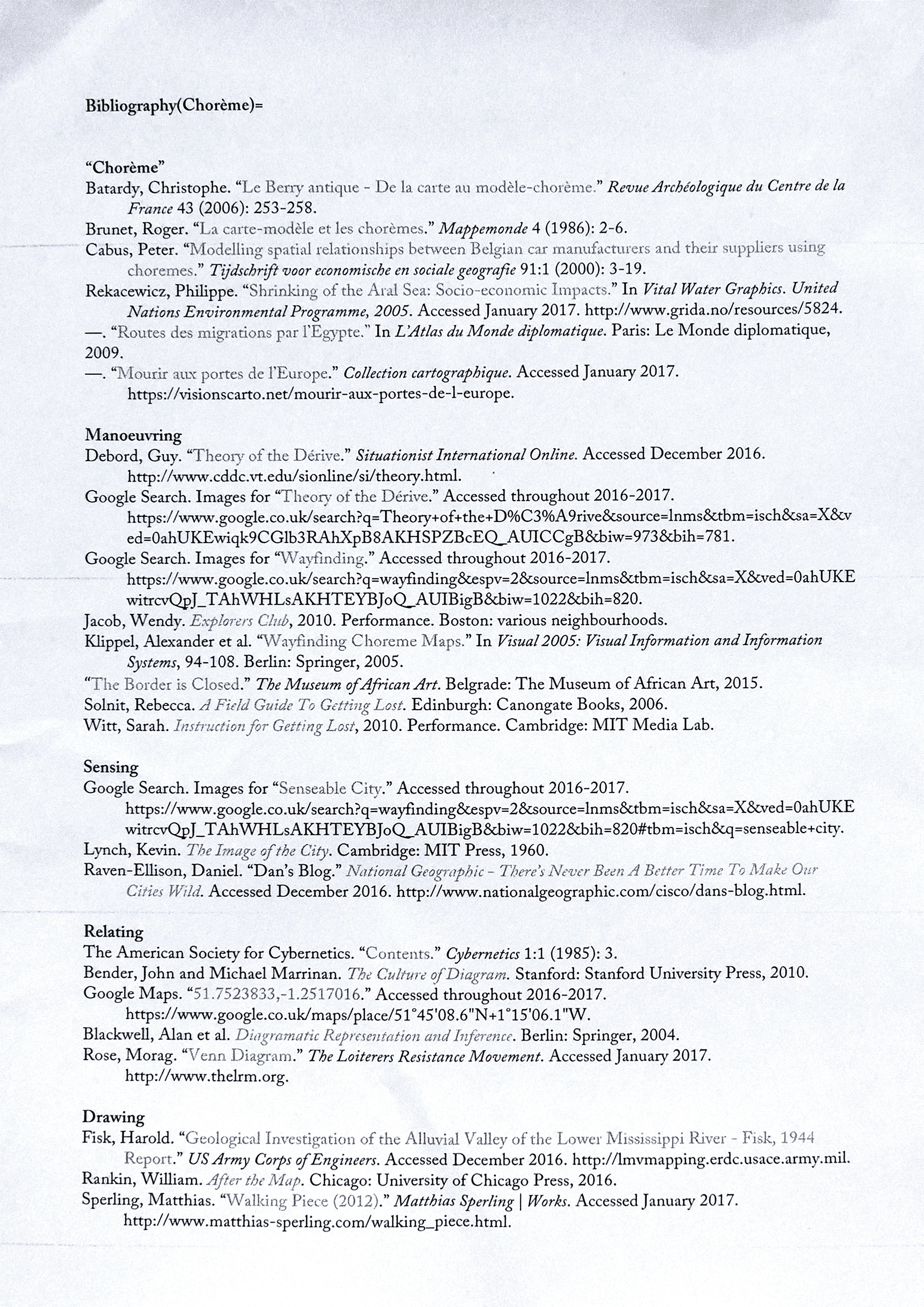Cover – Bibliography(chorème)=
Sohin Hwang with Pablo de Roulet
To cite this contribution:
Hwang, Sohin, and Pablo de Roulet. ‘Bibliography(chorème)=’ OAR: The Oxford Artistic and Practice Based Research Platform Issue 1 (2017), http://www.oarplatform.com/cover-bibliographychoreme/.
Statements
I had an interesting conversation with geographer Pablo de Roulet, who spoke to me about chorèmes. It was inspiring and confusing. Chorèmes describe a very specific kind of subjective and cognitive cartography, which made me wonder, however: how different were these maps from other kinds of cartography that I knew, such as psychogeography? For the cover of this issue, I compiled a bibliography for exploring the question of what chorèmes are – this object in itself functioning as a very subjective and cognitive trace of my exploration. To accompany the cover image, I created an expanded version of the bibliography, with images and links, which can be accessed online. The cover work has been and will be the site of my research. This activity seeks to establish an alternative relationship between acts of research and their publication.
Sohin Hwang
My sketch within Sohin Hwang’s cover work summarises the concept of an urban layer in the context of the study of the temporary implantation of international aid, and its use of space in urban contexts. The concept of an urban layer is used here to denote a variety of spatial practice rather than a space in itself. It includes two major components: built environment and virtual spaces. The part of the layer constituted by the built environment comprises buildings of various orders (housing, work, entertainment) that are used by staff of international organisations. The other part is virtual and represents instructions from the security departments of international organisations regarding where they are allowed to settle, work and more generally go, thus separating the built environment in two, through the invisible line of security evaluation.
As a site of research, this particular urban layer is the starting viewpoint, while the relation between this layer and the local environment constitutes the object of study of my doctoral dissertation. The sketch can be compared to chorèmes, which use graphic semiology as detached from topographical maps. Chorèmes were first employed and theorised by geographer Roger Brunet during the 1980s.1 The detachment from the map allows an emphasis on spatial relations as much as on the development of generalised models for spatial phenomena.
Pablo de Roulet
1. Roger Brunet, ‘La Carte-Modèle et Les Chorèmes,’ Mappemonde 86:4 (1986): 2–6.

